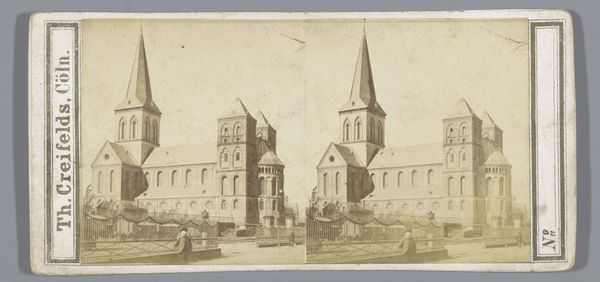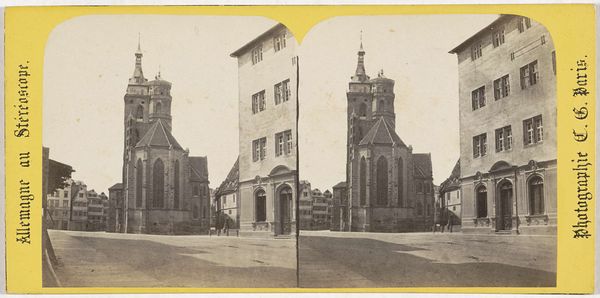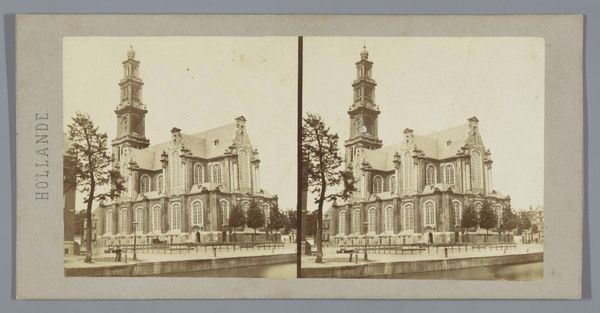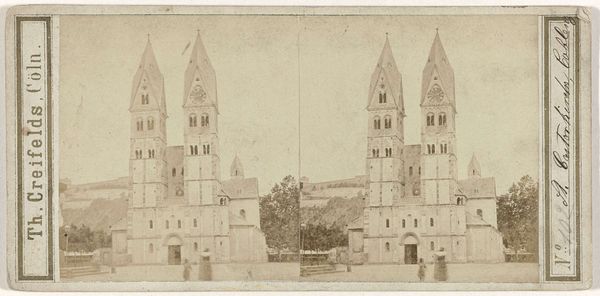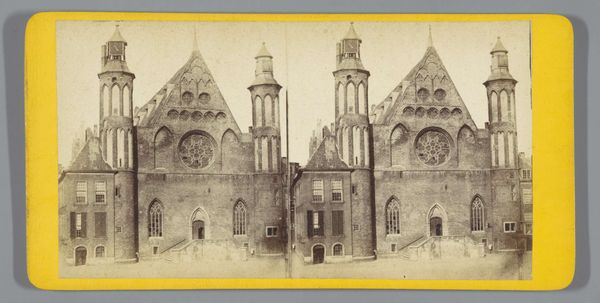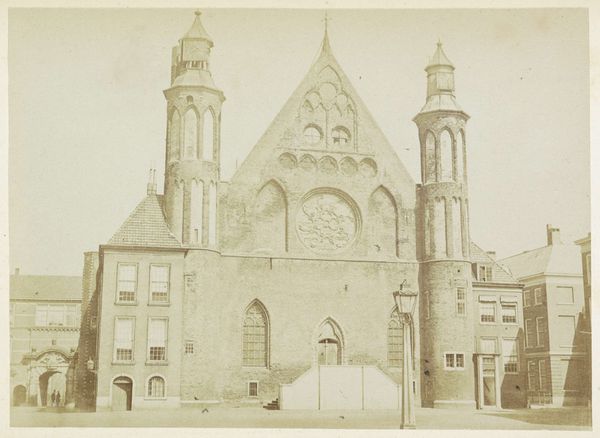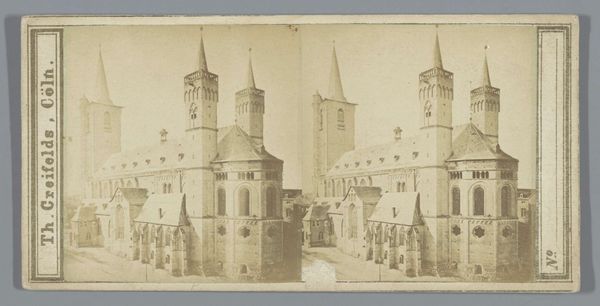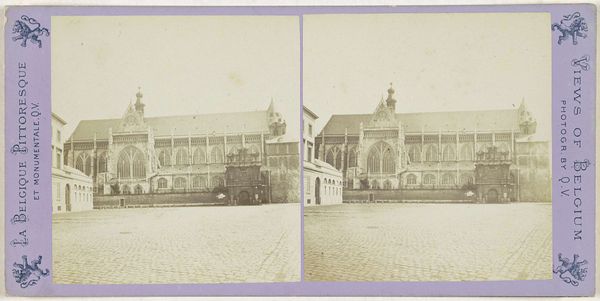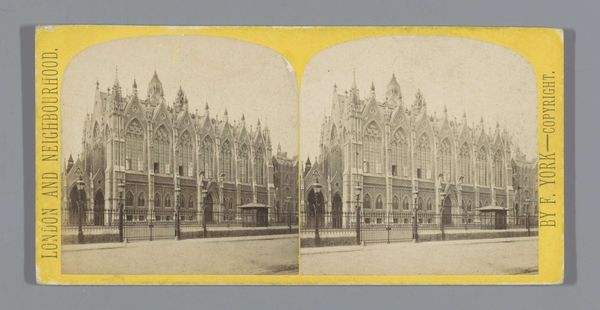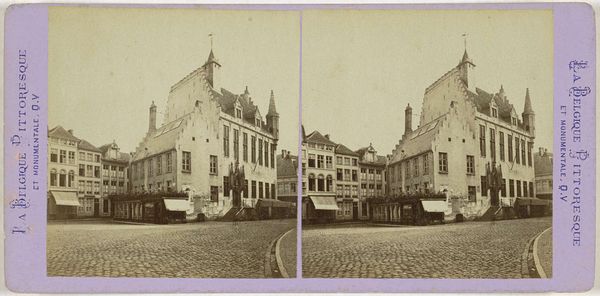
Dimensions: height 86 mm, width 176 mm
Copyright: Rijks Museum: Open Domain
Curator: Before us, we have an architectural study rendered in print: "Onze-Lieve-Vrouw-ter-Kapellekerk in Brussel" by Jules Hippolyte Quévál, dating from around 1866 to 1870. The Rijksmuseum holds this particular instance in its collection. Editor: My first impression is one of austere grandeur. The stark sepia tones amplify the church's formidable geometry and emphasize the interplay of light and shadow across its surfaces. Curator: Indeed. Quévál's approach offers us a fascinating study of Neoclassical form, wouldn’t you agree? Consider the rhythm created by the repetition of arched windows, and the almost brutal simplicity of the planar surfaces. It’s a deliberate manipulation of form. Editor: Absolutely. The deliberate choice to capture a cityscape emphasizes both civic pride and also reinforces ideas of stability and order, ideals particularly important considering Belgium’s own recent establishment. Do you not sense the public role such architecture was meant to perform? Curator: An astute point! One might further examine the orientation— the careful selection of this particular vantage point, directing the eye upward, creating a powerful visual axis toward what? A state perhaps? Or a god? Editor: Exactly, architecture acting almost like a theatrical stage set, directing attention to a perceived moral order. It subtly instructs the public on appropriate belief and behaviors. Curator: A compelling thought. Note the shadows; do they merely delineate form, or perhaps carry more weight? They obscure detail, simplifying and reducing complex elements to their most elementary form. Editor: Perhaps it is simply artistic interpretation, an emotional response, the photographer seeking to impart not just reality but its essence, making it into public spectacle for contemplation of their own place within a wider civic, moral structure. Curator: That’s fair, but it is imperative we address our immediate encounter to form and consider whether our response might be driven purely through geometric balance and distribution across space and what that means about the nature of reality, you see. Editor: While I cannot abandon a deeper look into how these constructions act upon people. A beautiful disagreement! I suppose that marks a key distinction. Curator: I believe this highlights exactly what is at stake, wouldn’t you say, by allowing architecture speak from both of our viewpoints at once? Editor: Perfectly concluded. It underlines the complexity inherent within even seemingly simple architectural studies.
Comments
No comments
Be the first to comment and join the conversation on the ultimate creative platform.
